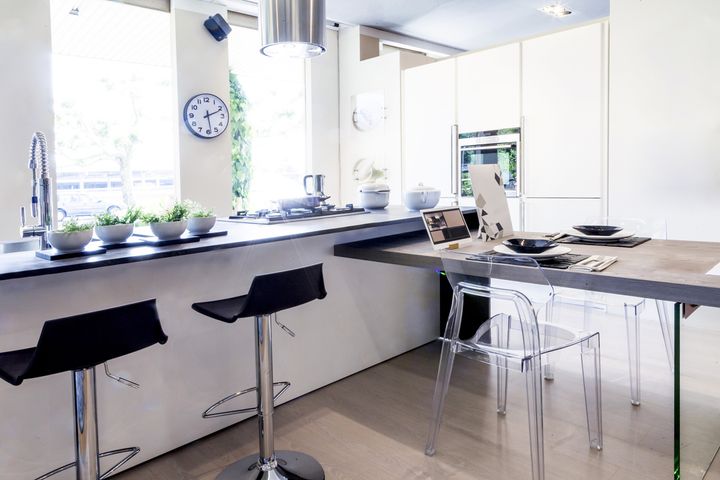
Not unlike everything else you do, staging a home will require the seller to put their best foot forward. Few things are more pivotal to the sale of a home than the first impression it leaves on prospective buyers. That said, it’s in your best interest as an investor to grab people’s attention as soon as possible. What’s more, studies have shown that staging a home can simultaneously shorten the period of time a home sits on the market while increasing offer prices. Who wouldn’t want that? It’s worth noting, however, that the benefits of staging will only be realized if the process is carried out correctly. Let’s take a look at some of the universal do’s and don’ts of home staging.
The Do’s
Make A Great First Impression: For what it’s worth, nothing leaves potential suitors for your property with a better impression than curb appeal. Pay special consideration to the message being communicated by the home’s outward appearance. The exterior of your property divulges more about the inside than many may realize; be sure it’s sending the message you want potential buyers to buy into. I recommend making the entrance and landscaping as inviting a the rest of the property, if not more so.
A perfect example is the fireplace in a living room; call attention to it with a cozy fire and adorn it with decorative features that instill a sense of homeownership in onlookers.
Highlight Selling Points In Each Room: Selling a home, or at least staging one, requires one to exercise a little creativity. It’s not enough to simply stage a home with furniture you deem “aesthetically pleasing” to the overall feel of a property; you have to facilitate an emotional response from those you have managed to catch the attention of. In order to do so, I recommend highlighting the most important features within each and every room. That way, those touring your home will be able to formulate a better sense of what it might be like to live in the subject property. A perfect example is the fireplace in a living room; call attention to it with a cozy fire and adorn it with decorative features that instill a sense of homeownership in onlookers.
Take Advantage Of Good Lighting: Few elements are capable of making a home more inviting than lighting, which is why no attempt at staging is complete without the proper illumination. And what is a staged open house if not for a welcoming environment to spark the interest of potential buyers? Having said that, I recommend hosting your open houses slightly before or after noon, when the sun isn’t at its highest point in the sky. Given the angle of the sun to the home, at say ten in the morning, sellers will be awarded all the light they need by simply opening a few blinds. Done correctly, lighting can make a room seem larger and ultimately cater to the needs of onlookers. I can assure you the sunlight from a warm day is more welcoming than the pale glow of a fluorescent light bulb. And while it’s certainly a small difference, it’s a difference nonetheless. Remember, when selling a home, your efforts are only as good as the sum of all the parts; every little bit compounds and adds up. The last thing you want to do is give a prospective buyer reason to doubt any good feelings they may have about the property.
Focus On The Rooms That Sell: To the best of my knowledge, there are two rooms in a house that will separate it from the competition: the kitchen and the bathrooms. If for nothing else, these two rooms have taken centerstage on the list of what buyers want most out of a home. It’s safe to say kitchens and bathrooms sell homes; the sooner you realize that, the better. Don’t hesitate to spend a little more time on these rooms, and don’t be afraid to accentuate their assets. If your master bath has a rain shower head, let it be known. The idea is to make these two rooms stand out from the rest, as there is a good chance your audience will place a priority on them. I would even go as far as baking some fresh cookies to elicit an emotional response; one that brings them back to simpler times. Remember, every little bit helps.
The Don’ts
Instead of decorating every single room, I recommend leaving one room untouched — a blank canvas, if you will.
Don’t Stage Every Room: The idea of staging a home is to give potential buyers a sense of what it might be like to live in the property, but I digress. You can’t paint the entire picture for them; it’s best if they are able to conjure up some visions of their own. Instead of decorating every single room, I recommend leaving one room untouched — a blank canvas, if you will. While You want to make sure the most important rooms are staged, feel free to purposefully neglect any ancillary rooms that don’t necessarily need to shine in order to sell the home. That way, the potential buyer can come up with their own ideas. Perhaps they see a nursery, or even a quaint office space. Either way, the vision they create for themselves is bound to build a stronger emotional attachment than you could ever hope to achieve.
Don’t Place Furniture Flush On Walls: Conventional wisdom suggests that furniture is best suited up against a wall. After all, it makes sense. Most remain adamant that pushing furniture up against a wall optimizes space, and it would be hard to argue their point. However, in staging a home to sell, it’s more important to recreate a functional space. Instead of squaring your furniture up to meet the angles of adjacent walls, position it in a way that lends itself to a conversational manner. In doing so, you open up the floor for a more inviting, functional living space. And for those of you that may be concerned about utilizing the space efficiently, I encourage you to get smaller furniture. You no longer have to sacrifice functionality for space.
Don’t Cut Corners: It’s true what they say: the devil is in the details. Those staging a home had better come prepared to decorate accordingly. Strategically place intriguing decorations around the home. And yes, where they are placed matters. While you may have a fine, antique coffee table, the right decorations can make it a centerpiece worthy of conversation. Outside of the common trinkets, don’t neglect natural elements; flowers can go a long way in opening up a home.
Don’t Neglect Online Real Estate: It’s not uncommon for most homebuyers to initiate their search online. In fact, nearly half of all buyers start their search online. That said, you have to be mindful of where you are making your first impression. If your audience is viewing your home for the first time online, your staging efforts must be reflected in the photos you post online. Remember, the first impression is everything; if your pictures fail to capture the true essence you were going for, all your staging efforts will be for naught.
When it comes down to it, staging a home is an integral marketing strategy; one that has the power to both increase exposure and profits. However, only those that stage correctly will be made privy to the benefits that have become synonymous with properly staged homes.
